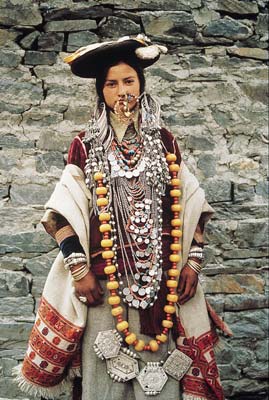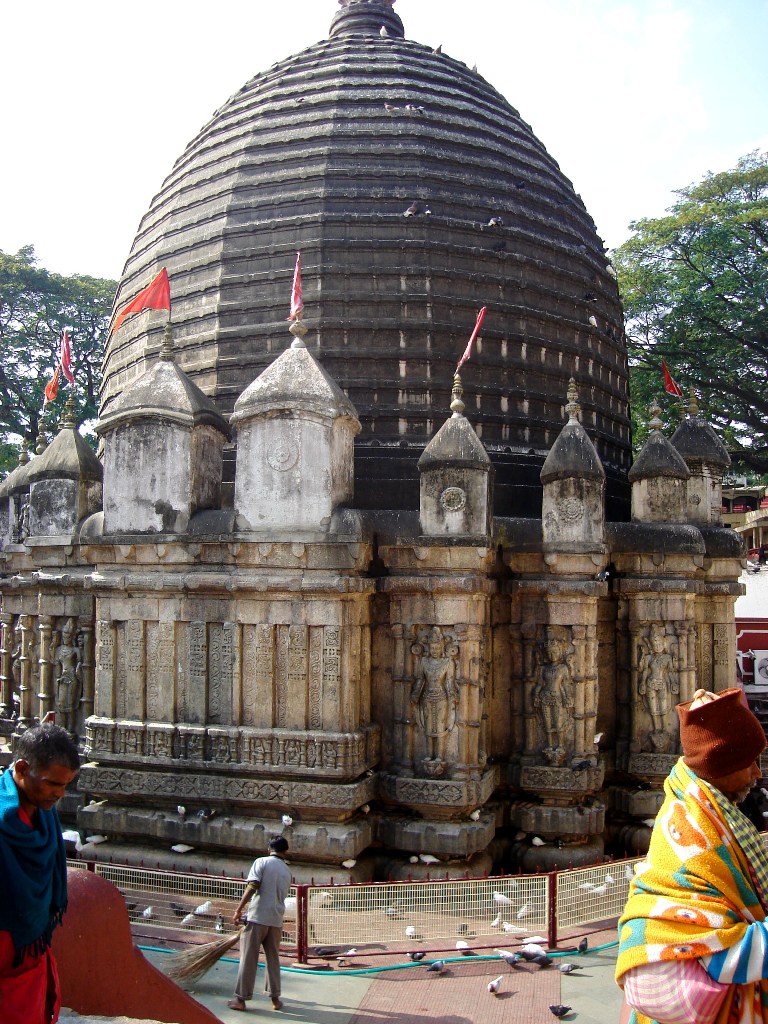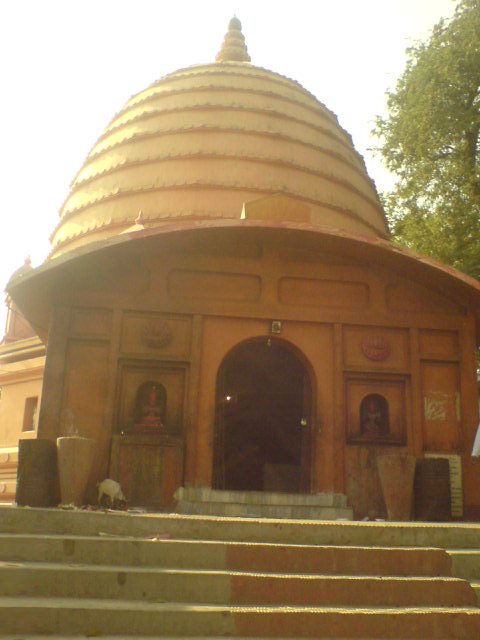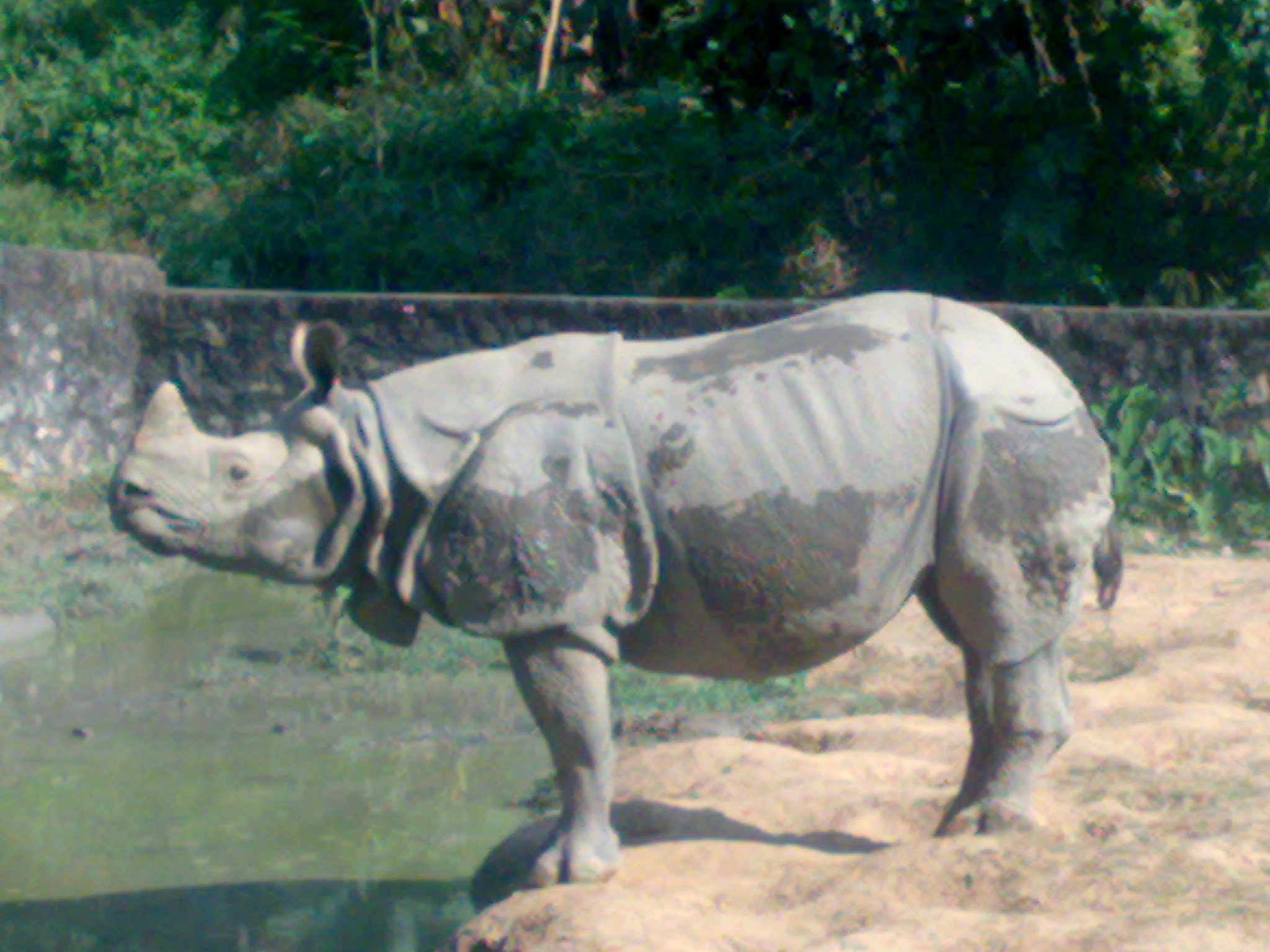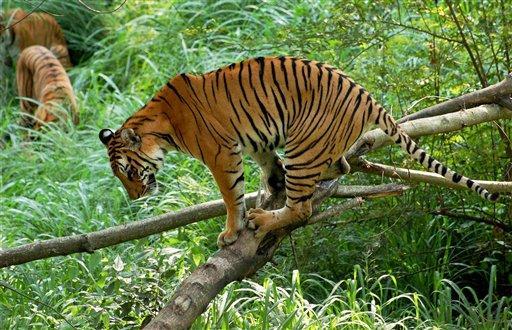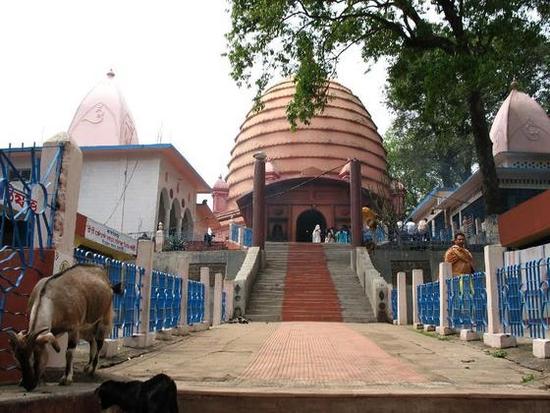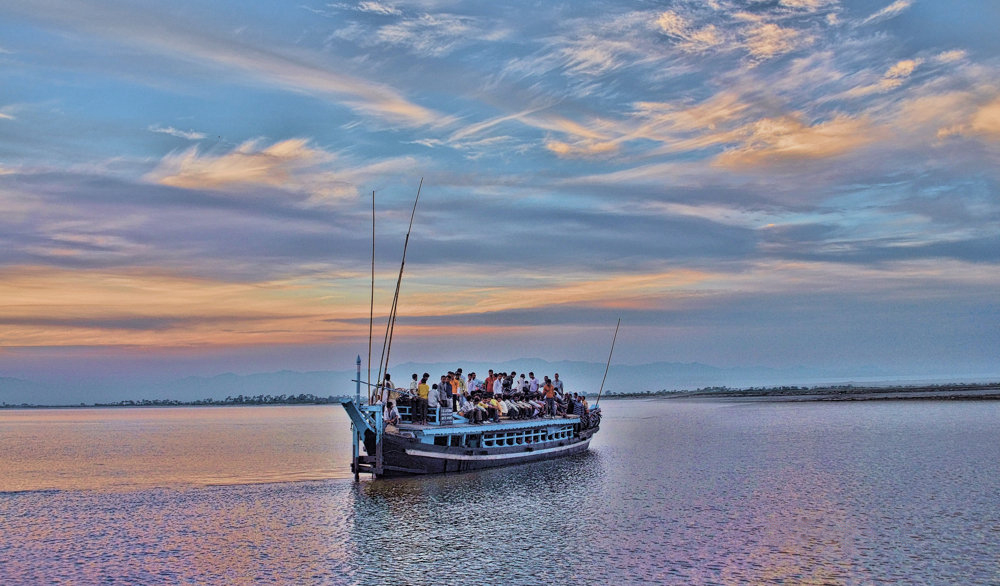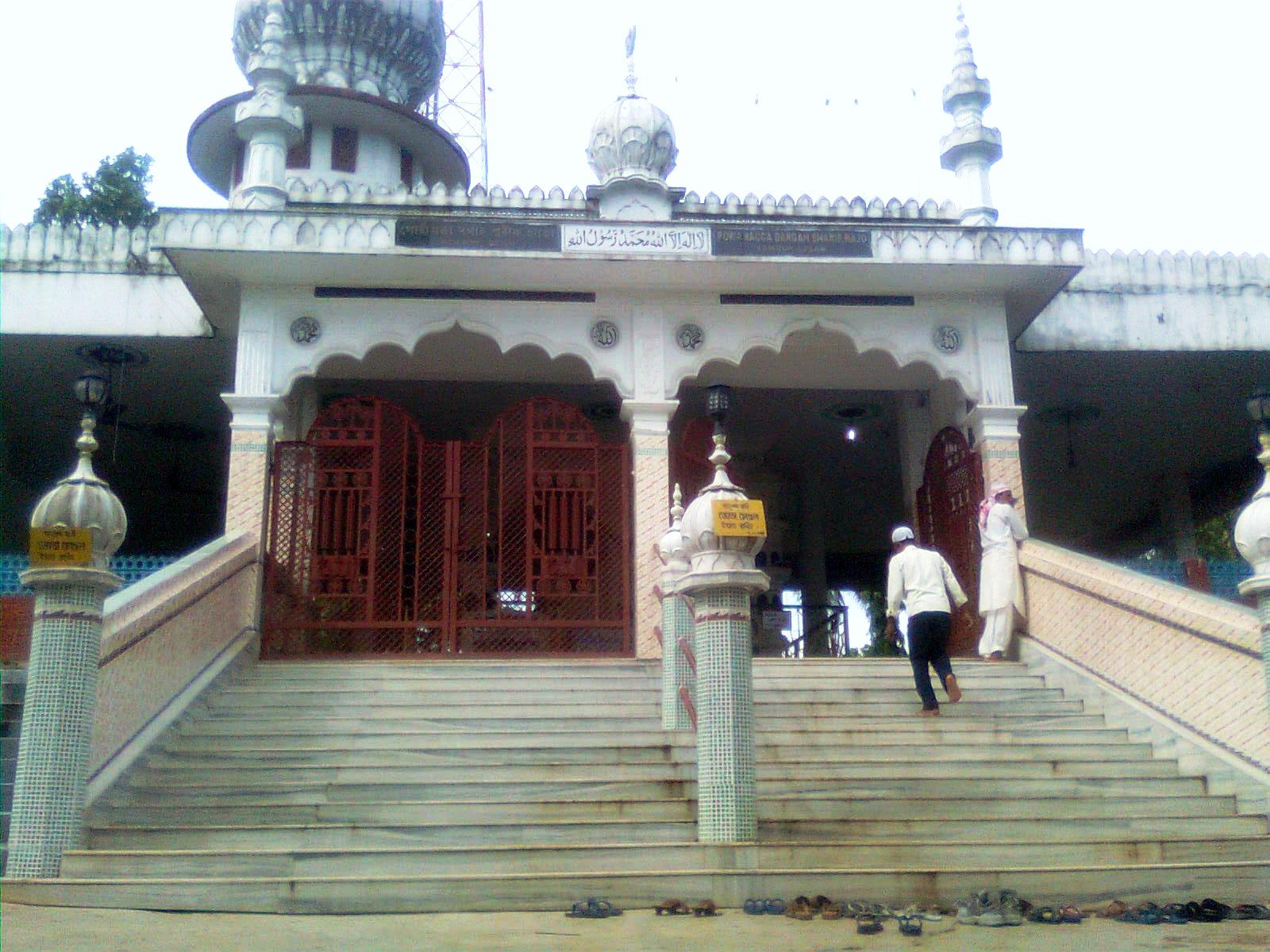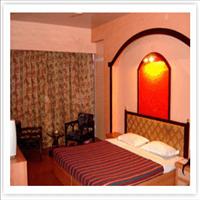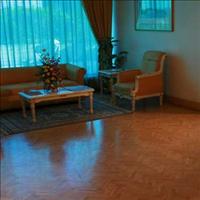Guwahati
Jewel of the North -East
General Information
Other Name: Dispur, District: Kamrup, State: Assam, India
Area: 0
Languages Spoken: Assamese, Bengali, Hindi, English
Long Distance Code: +91-361
Importance: Kamkhya temple and economic capital of Assam.
Best Time to Visit: October to April
Description
Guwahati and Dispur are the twin cities within the distance of 8 km from each other. Actually Dispur is the political capital of the state but Guwahati being the commercial hub of the entire North East region; many mistake it to be the capital of Assam. Dispur is famous for its auction market of tea. Guwahati known as Pragjyotishpur earlier is an ancient city from the Vedic days. Over the period of time it became the melting pot of cultures and traditions of the people who came and settled here. Today Guwahati is the commercial and the cultural hub of Assam. Although Dispur is the capital; it is Guwahati which gains importance throughout. <br />Guwahati with its natural splendours and the mighty Brahmputra River is a major attraction as the gateway to the North eastern states. It is famous for the proximity to the Kamakhya temple, the Kaziranga and the Manas sanctuaries and the various tribal tours which start from here. The vast lush green tea gardens and the beautiful paddy fields with the equally beautiful surroundings surely attract one and all to Guwahati.<br />Assam's history and culture also revolve around this ancient city which was known as Pragjyotishpur and later also as Kamrup. The name Guwahati comes from two words Guwa and Hati meaning the market place of beetle nuts, which was the main trade of the people from Guwahati. The magical aura that the city commands is from its centuries old legacy and ancient traditions. This starting point to the unexplored area in the Far East corners of India, is itself is full of surprises. <br />The main attraction of Guwahati lies not only in its natural splendours but also its serene calmness and the not so modernized approach of life. The people of Guwahati are still self satisfied and would like to be left alone. Although some anti national activities with militant support have been on for some years in the area, the Assamese clan is basically peace loving. <br />The people are busy in either plucking tea leaves in the vast tea gardens or are in some or the other way related to the occupations with the tea gardens. People work in paddy fields and silk production is also one of the important trades of this part of the country. The silk produced here known as Moga and Pata is world famous for its quality and soft texture. People love to sing and dance on special occasion and one such special occasion is the Bihu. Bihu is celebration of Spring and the harvest season and is celebrated with great fervour throughout Assam.Location
Located on the banks of the mighty Brahmputra River, Guwahati and Dispur are within the range of 8 kms from each other. The River Brahmputra which cuts across Assam is the widest here and at times the other bank is invisible. Guwahati is surrounded by hills from three sides and the mighty Brahmputra in the North. Surrounded by the districts of Nabari, Barpete, Gopalpara, Darrang and Marigaon, it is bordered by the state of Meghalaya in the South. Tropical rains lash Guwahati from May to September and it chills the weather in the winter months.
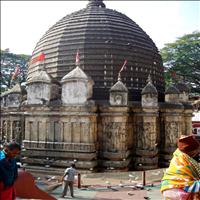 For past many a centuries, the Kamakhya Devi temple is one of the most revered ones in the country. Dedicated to one of the forms of Goddess Parvati, it is situated on the small hill called Nilachal in Guwahati. This ancient temple was destroyed many times and the present structure built in a shape of beehive was patronized by the King of Cooch Behar in the 17th century. The temple and its surroundings command a superb view of the town and its beauty. \r\nThe temple is one of the 108 Shakti Peethas all around the country. According to a mythological legend, Sati wife of Shiva could not take insult of her husband and immolated herself to ashes. Hearing this Shiva was enraged he reinstalled the body and with the body on his shoulders he started his dance full of rage. This dance would have devastated the world and therefore Lord Brahma, Lord Vishnu and the Shani God got inside the body of Sati and with their powers spilt the body so that Shiva could never reinstall it. Pieces of Sati's body in small 108 parts fell across the subcontinent. The one that fell on the Mount of Nilachal was the Yoni or the Genitalia of Sati. It is therefore said that this temple has great healing powers especially for those who do not have children.\r\nTradition has it that once in every year, the spring waters at Kamakhya turn red and the temple remains closed. Kamakhya, the Mother Goddess, is supposed to enter her period of menstruation. Cloth offerings brought from near and afar by devotees are soaked in the waters and distributed as prasad (offering). In a way the Kamakhya temple and its rituals are celebrations of life and woman hood as whole.
For past many a centuries, the Kamakhya Devi temple is one of the most revered ones in the country. Dedicated to one of the forms of Goddess Parvati, it is situated on the small hill called Nilachal in Guwahati. This ancient temple was destroyed many times and the present structure built in a shape of beehive was patronized by the King of Cooch Behar in the 17th century. The temple and its surroundings command a superb view of the town and its beauty. \r\nThe temple is one of the 108 Shakti Peethas all around the country. According to a mythological legend, Sati wife of Shiva could not take insult of her husband and immolated herself to ashes. Hearing this Shiva was enraged he reinstalled the body and with the body on his shoulders he started his dance full of rage. This dance would have devastated the world and therefore Lord Brahma, Lord Vishnu and the Shani God got inside the body of Sati and with their powers spilt the body so that Shiva could never reinstall it. Pieces of Sati's body in small 108 parts fell across the subcontinent. The one that fell on the Mount of Nilachal was the Yoni or the Genitalia of Sati. It is therefore said that this temple has great healing powers especially for those who do not have children.\r\nTradition has it that once in every year, the spring waters at Kamakhya turn red and the temple remains closed. Kamakhya, the Mother Goddess, is supposed to enter her period of menstruation. Cloth offerings brought from near and afar by devotees are soaked in the waters and distributed as prasad (offering). In a way the Kamakhya temple and its rituals are celebrations of life and woman hood as whole.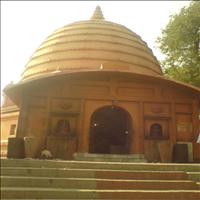 The name of Pragjyotishpur that was conferred on Guwahati most probably due to this temple, the temple of nine planets. The name pragjyotish literally means the land of astrology and astronomy. This temple built in the same architectural style of honey bee hive has the nine planets circulating around the Lingam or the Sun god. It is situated in the east of the city atop a small hillock.
The name of Pragjyotishpur that was conferred on Guwahati most probably due to this temple, the temple of nine planets. The name pragjyotish literally means the land of astrology and astronomy. This temple built in the same architectural style of honey bee hive has the nine planets circulating around the Lingam or the Sun god. It is situated in the east of the city atop a small hillock. The biggest museum in the North East, the state museum of Assam was established in 1940. It houses the various artifacts found in the excavations in and around the north east region.
The biggest museum in the North East, the state museum of Assam was established in 1940. It houses the various artifacts found in the excavations in and around the north east region.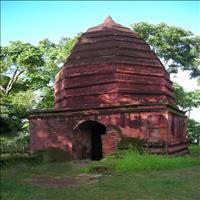 One of many temples dedicated to Lord Shiva, the unique thing about this temple is the location. It is located on one of the smallest riverine islands in the world. Small ferry boats can take you to the temple to worship the Lord. Umananda, literally means husband of Uma, that it Parvati.
One of many temples dedicated to Lord Shiva, the unique thing about this temple is the location. It is located on one of the smallest riverine islands in the world. Small ferry boats can take you to the temple to worship the Lord. Umananda, literally means husband of Uma, that it Parvati.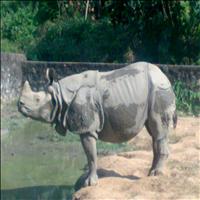 A visit to the largest natural Zoo of the country is a must during a visit to Guwahati. It houses many wild animals in their most natural habitat. The animals very typical of the Northeastern region are kept here. They include the one horned Rhino and the musk deer.
A visit to the largest natural Zoo of the country is a must during a visit to Guwahati. It houses many wild animals in their most natural habitat. The animals very typical of the Northeastern region are kept here. They include the one horned Rhino and the musk deer.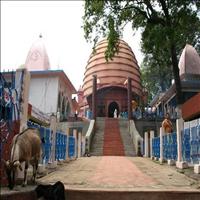 The Vashishtha Ashram, an interesting old shrine, with plenty of verdure and three beautiful streams, Lalita, Kanta and Sandhya stands near the Navagraha temple.
The Vashishtha Ashram, an interesting old shrine, with plenty of verdure and three beautiful streams, Lalita, Kanta and Sandhya stands near the Navagraha temple. Tucked in the mighty Brahmputra, Majuli is the world's largest river island. Majuli is known the world over in academic circles for the Xatras which have preserved the Vaisnavite culture. There are islands within islands in Majuli. The crops are sowed and they blossom. The people staying here know how to swim and row a boat even before they walk and talk. The island's beauty is its changing colours.
Tucked in the mighty Brahmputra, Majuli is the world's largest river island. Majuli is known the world over in academic circles for the Xatras which have preserved the Vaisnavite culture. There are islands within islands in Majuli. The crops are sowed and they blossom. The people staying here know how to swim and row a boat even before they walk and talk. The island's beauty is its changing colours.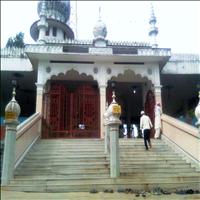 Situated at the other bank of Brahmaputra just 32 km away from Guwahati Hajo is a meeting point of three religions - Hinduism, Islam and Buddhism. It houses a number of temples of Muslim, Buddhist and Hindu faith. The famous Haigrib Madhab Temple here is said to contain a relic of Buddha. \r\nThe 12th century Mosque located at the hilltop is reffered as Poa Mecca i.e. one fourth of holy Mecca as it has one- fourth sanctity of Mecca. The Madan Kamdev archeological site with erotic sculptures has temples dating back to 10th -12th centuries. Kamrup- the ancient name of Assam- is believed to have derived its name from the legend that Love- God Kama or Madan, after being turned into ashes by an angry Shiva, was reborn here. One school believes that Madan was reborn and united to Rati in this tiny hillock.
Situated at the other bank of Brahmaputra just 32 km away from Guwahati Hajo is a meeting point of three religions - Hinduism, Islam and Buddhism. It houses a number of temples of Muslim, Buddhist and Hindu faith. The famous Haigrib Madhab Temple here is said to contain a relic of Buddha. \r\nThe 12th century Mosque located at the hilltop is reffered as Poa Mecca i.e. one fourth of holy Mecca as it has one- fourth sanctity of Mecca. The Madan Kamdev archeological site with erotic sculptures has temples dating back to 10th -12th centuries. Kamrup- the ancient name of Assam- is believed to have derived its name from the legend that Love- God Kama or Madan, after being turned into ashes by an angry Shiva, was reborn here. One school believes that Madan was reborn and united to Rati in this tiny hillock. Known as the picture gallery of archaeological ruins, the Surya Prahar Ruins are situated west of Guwahati in Goalpara. Here one can find a fine blend of temples depicting the three cults of Hinduism, the Shaivism, the Vaishnavism and the Shakti cult. Temples dedicated to these various cults are found here. The most important are the innumerous granite Shiva Lingams that are found here. It also has many rock - cut beautiful figures of Shiva, Goddess Manasa and Durga. The twelve Aditya which is Sun God are also seen here with their father figure standing in the middle.
Known as the picture gallery of archaeological ruins, the Surya Prahar Ruins are situated west of Guwahati in Goalpara. Here one can find a fine blend of temples depicting the three cults of Hinduism, the Shaivism, the Vaishnavism and the Shakti cult. Temples dedicated to these various cults are found here. The most important are the innumerous granite Shiva Lingams that are found here. It also has many rock - cut beautiful figures of Shiva, Goddess Manasa and Durga. The twelve Aditya which is Sun God are also seen here with their father figure standing in the middle.North East Heritage & Orissa / PI-0248 (13 Days / 12 Nights)
Kolkata-Guwahati-Kaziranga-Jorhat-Kolkata-Bhubaneshwar-Puri-Konarak-Puri-Bhubaneshwar-Kolkata
Detailed Itinerary
Day 1 : Kolkata
Day 2 : Kolkata
Day 3 : Kolkata-Guwahati
Day 4 : Guwahati-Kaziranga
Day 5 : Kaziranga
Day 6 : Kaziranga - Jorhat
Day 7 : Jorhat - Kolkata
Day 8 : Kolkata - Bhubaneshwar
Day 9 : Bhubaneshwar
Day 10 : Bhubaneshwar - Puri
Day 11 : Puri - Konarak - Puri
Day 12 : Puri
Day 13 : Puri - Bhubaneshwar - Kolkata
Kolkata-Guwahati-Kaziranga-Jorhat-Kolkata-Bhubaneshwar-Puri-Konarak-Puri-Bhubaneshwar-Kolkata
Detailed Itinerary
Day 1 : Kolkata
Day 2 : Kolkata
Day 3 : Kolkata-Guwahati
Day 4 : Guwahati-Kaziranga
Day 5 : Kaziranga
Day 6 : Kaziranga - Jorhat
Day 7 : Jorhat - Kolkata
Day 8 : Kolkata - Bhubaneshwar
Day 9 : Bhubaneshwar
Day 10 : Bhubaneshwar - Puri
Day 11 : Puri - Konarak - Puri
Day 12 : Puri
Day 13 : Puri - Bhubaneshwar - Kolkata
Meghalaya Cultural Tour / PI-0504 (6 Days / 5 Nights)
Delhi-Kolkata-Guwahati-Shillong-Cherapunjee-Shillong-Umaim Lake-Guwahati-Delhi
Detailed Itinerary
Day 1 : Delhi-Kolkata
Day 2 : Guwahati - Shillong
Day 3 : Shillong
Day 4 : Shillong - Cherapunjee - Shillong
Day 5 : Shillong - Umaim Lake - Guwahati
Day 6 : Guwahati-Delhi
Delhi-Kolkata-Guwahati-Shillong-Cherapunjee-Shillong-Umaim Lake-Guwahati-Delhi
Detailed Itinerary
Day 1 : Delhi-Kolkata
Day 2 : Guwahati - Shillong
Day 3 : Shillong
Day 4 : Shillong - Cherapunjee - Shillong
Day 5 : Shillong - Umaim Lake - Guwahati
Day 6 : Guwahati-Delhi
Baishnavite Tour / PI-0299 (14 Days / 13 Nights)
Jorhat-Majuli-Kohima-Dimapur-Touphema-Kohima-Imphal-Kaziranga-Guwahati-Barpeta-Guwahati
Based on the Assamese Vaishnavite culture, this tour takes you across these unexplored north east Indian landscapes that are equally rich in heritage and culture as their more popular counterparts. This includes the revered temples and monasteries of north east that are pilgrim spots for those following the Vaishnavite culture.
Detailed Itinerary
Day 1 : Jorhat
Day 2 : Jorhat
Day 3 : Jorhat - Majuli
Day 4 : Majuli
Day 5 : Kohima - Dimapur
Day 6 : Touphema - Kohima
Day 7 : Imphal
Day 8 : Imphal
Day 9 : Kaziranga
Day 10 : Kaziranga
Day 11 : Guwahati
Day 12 : Guwahati - Barpeta
Day 13 : Barpeta - Guwahati
Day 14 : Guwahati
Jorhat-Majuli-Kohima-Dimapur-Touphema-Kohima-Imphal-Kaziranga-Guwahati-Barpeta-Guwahati
Based on the Assamese Vaishnavite culture, this tour takes you across these unexplored north east Indian landscapes that are equally rich in heritage and culture as their more popular counterparts. This includes the revered temples and monasteries of north east that are pilgrim spots for those following the Vaishnavite culture.
Detailed Itinerary
Day 1 : Jorhat
Day 2 : Jorhat
Day 3 : Jorhat - Majuli
Day 4 : Majuli
Day 5 : Kohima - Dimapur
Day 6 : Touphema - Kohima
Day 7 : Imphal
Day 8 : Imphal
Day 9 : Kaziranga
Day 10 : Kaziranga
Day 11 : Guwahati
Day 12 : Guwahati - Barpeta
Day 13 : Barpeta - Guwahati
Day 14 : Guwahati
Monastic Tour / PI-0301 (14 Days / 13 Nights)
Guwahati-Bomdila-Tawang-Dirang-Nameri-Kaziranga-Guwahati
Detailed Itinerary
Day 1 : Guwahati
Day 2 : Guwahati - Bomdila
Day 3 : Bomdila - Tawang
Day 4 : Tawang
Day 5 : Tawang
Day 6 : Tawang - Dirang
Day 7 : Dirang
Day 8 : Dirang - Nameri
Day 9 : Kaziranga
Day 10 : Kaziranga
Day 11 : Kaziranga
Day 12 : Kaziranga - Guwahati
Day 13 : Guwahati
Day 14 : Guwahati
Guwahati-Bomdila-Tawang-Dirang-Nameri-Kaziranga-Guwahati
Detailed Itinerary
Day 1 : Guwahati
Day 2 : Guwahati - Bomdila
Day 3 : Bomdila - Tawang
Day 4 : Tawang
Day 5 : Tawang
Day 6 : Tawang - Dirang
Day 7 : Dirang
Day 8 : Dirang - Nameri
Day 9 : Kaziranga
Day 10 : Kaziranga
Day 11 : Kaziranga
Day 12 : Kaziranga - Guwahati
Day 13 : Guwahati
Day 14 : Guwahati
Western Arunachal Cultural Tour / PI-0303 (14 Days / 13 Nights)
Delhi-Kolkata-Guwahati-Nameri-Dirang-Tawang-Bomdila-Itanagar-Ziro-Daporijo-Along-Dibrugarh-Delhi-Kolkata
Detailed Itinerary
Day 1 : Delhi - Kolkata - Guwahati
Day 2 : Guwahati - Nameri
Day 3 : Nameri
Day 4 : Nameri - Dirang
Day 5 : Dirang - Tawang
Day 6 : Tawang
Day 7 : Tawang - Bomdila
Day 8 : Bomdila - Itanagar
Day 9 : Itanagar - Ziro
Day 10 : Ziro - Daporijo
Day 11 : Daporijo - Along
Day 12 : Along
Day 13 : Along - Dibrugarh
Day 14 : Dibrugarh - Delhi - Kolkata
Delhi-Kolkata-Guwahati-Nameri-Dirang-Tawang-Bomdila-Itanagar-Ziro-Daporijo-Along-Dibrugarh-Delhi-Kolkata
Detailed Itinerary
Day 1 : Delhi - Kolkata - Guwahati
Day 2 : Guwahati - Nameri
Day 3 : Nameri
Day 4 : Nameri - Dirang
Day 5 : Dirang - Tawang
Day 6 : Tawang
Day 7 : Tawang - Bomdila
Day 8 : Bomdila - Itanagar
Day 9 : Itanagar - Ziro
Day 10 : Ziro - Daporijo
Day 11 : Daporijo - Along
Day 12 : Along
Day 13 : Along - Dibrugarh
Day 14 : Dibrugarh - Delhi - Kolkata
Tribal Cultural Tour / PI-0439 (21 Days / 20 Nights)
Dibrugarh-Namdapha-Dibru Saikhowa-Dibru-Roing-Pasighat-Along-Daporijo-Ziro-Itanagar-Rupa-Tawang-Dirang-Nameri-Guwahati
Detailed Itinerary
Day 1 : Dibrugarh
Day 2 : Dibrugarh - Namdapha
Day 3 : Namdapha
Day 4 : Namdapha - Dibru Saikhowa
Day 5 : Dibru - Roing
Day 6 : Roing - Pasighat
Day 7 : Pasighat - Along
Day 8 : Along - Daporijo
Day 9 : Daporijo - Ziro
Day 10 : Itanagar
Day 11 : Itanagar
Day 12 : Itanagar - Rupa
Day 13 : Tawang
Day 14 : Tawang
Day 15 : Tawang
Day 16 : Tawang - Dirang
Day 17 : Dirang
Day 18 : Dirang - Nameri
Day 19 : Nameri - Guwahati
Day 20 : Guwahati
Day 21 : Guwahati
Dibrugarh-Namdapha-Dibru Saikhowa-Dibru-Roing-Pasighat-Along-Daporijo-Ziro-Itanagar-Rupa-Tawang-Dirang-Nameri-Guwahati
Detailed Itinerary
Day 1 : Dibrugarh
Day 2 : Dibrugarh - Namdapha
Day 3 : Namdapha
Day 4 : Namdapha - Dibru Saikhowa
Day 5 : Dibru - Roing
Day 6 : Roing - Pasighat
Day 7 : Pasighat - Along
Day 8 : Along - Daporijo
Day 9 : Daporijo - Ziro
Day 10 : Itanagar
Day 11 : Itanagar
Day 12 : Itanagar - Rupa
Day 13 : Tawang
Day 14 : Tawang
Day 15 : Tawang
Day 16 : Tawang - Dirang
Day 17 : Dirang
Day 18 : Dirang - Nameri
Day 19 : Nameri - Guwahati
Day 20 : Guwahati
Day 21 : Guwahati
Adventure Tour India / PI-0440 (25 Days / 24 Nights)
Guwahati-Cherrapunji-Shillong-Kaziranga-Kohima-Touphema-Kohima-Kipfiizha-Dziikuo valley-Dziikou Valley-Kipfiizha-Kohima-Khonoma-Kohima-Jorhat-Dirang-Sela Pass-Sayla-Chabrilla-Nurarang-Tawang-Dirang-Sangti Valley-Dirang-Bhalukpong-Guwahati
Get a glimpse of the land of fiercely independent Angami Warrior Nagas in addition to trekking in some of the best valleys of the region. Discover the beauty and charm of this mystical and picturesque place noted for its unhurried pace of life, calm environments as well as fresh unpolluted air.
Detailed Itinerary
Day 1 : Guwahati
Day 2 : Guwahati - Cherrapunji
Day 3 : Cherrapunji
Day 4 : Cherrapunji
Day 5 : Cherrapunji - Shillong
Day 6 : Shillong
Day 7 : Shillong - Kaziranga
Day 8 : Kaziranga
Day 9 : Kaziranga - Kohima
Day 10 : Touphema-Kohima
Day 11 : Kipfiizha - Dziikuo valley
Day 12 : Dziikou Valley- Kipfiizha
Day 13 : Kohima - Khonoma
Day 14 : Kohima - Jorhat
Day 15 : Jorhat - Dirang
Day 16 : Dirang - Sela Pass
Day 17 : Sayla - Chabrilla
Day 18 : Chabrilla - Nurarang - Tawang
Day 19 : Tawang
Day 20 : Tawang - Dirang
Day 21 : Sangti Valley
Day 22 : Sangti Valley - Dirang
Day 23 : Dirang - Bhalukpong
Day 24 : Bhalukpong - Guwahati
Day 25 : Guwahati
Guwahati-Cherrapunji-Shillong-Kaziranga-Kohima-Touphema-Kohima-Kipfiizha-Dziikuo valley-Dziikou Valley-Kipfiizha-Kohima-Khonoma-Kohima-Jorhat-Dirang-Sela Pass-Sayla-Chabrilla-Nurarang-Tawang-Dirang-Sangti Valley-Dirang-Bhalukpong-Guwahati
Get a glimpse of the land of fiercely independent Angami Warrior Nagas in addition to trekking in some of the best valleys of the region. Discover the beauty and charm of this mystical and picturesque place noted for its unhurried pace of life, calm environments as well as fresh unpolluted air.
Detailed Itinerary
Day 1 : Guwahati
Day 2 : Guwahati - Cherrapunji
Day 3 : Cherrapunji
Day 4 : Cherrapunji
Day 5 : Cherrapunji - Shillong
Day 6 : Shillong
Day 7 : Shillong - Kaziranga
Day 8 : Kaziranga
Day 9 : Kaziranga - Kohima
Day 10 : Touphema-Kohima
Day 11 : Kipfiizha - Dziikuo valley
Day 12 : Dziikou Valley- Kipfiizha
Day 13 : Kohima - Khonoma
Day 14 : Kohima - Jorhat
Day 15 : Jorhat - Dirang
Day 16 : Dirang - Sela Pass
Day 17 : Sayla - Chabrilla
Day 18 : Chabrilla - Nurarang - Tawang
Day 19 : Tawang
Day 20 : Tawang - Dirang
Day 21 : Sangti Valley
Day 22 : Sangti Valley - Dirang
Day 23 : Dirang - Bhalukpong
Day 24 : Bhalukpong - Guwahati
Day 25 : Guwahati
Guwahati, India Tours

